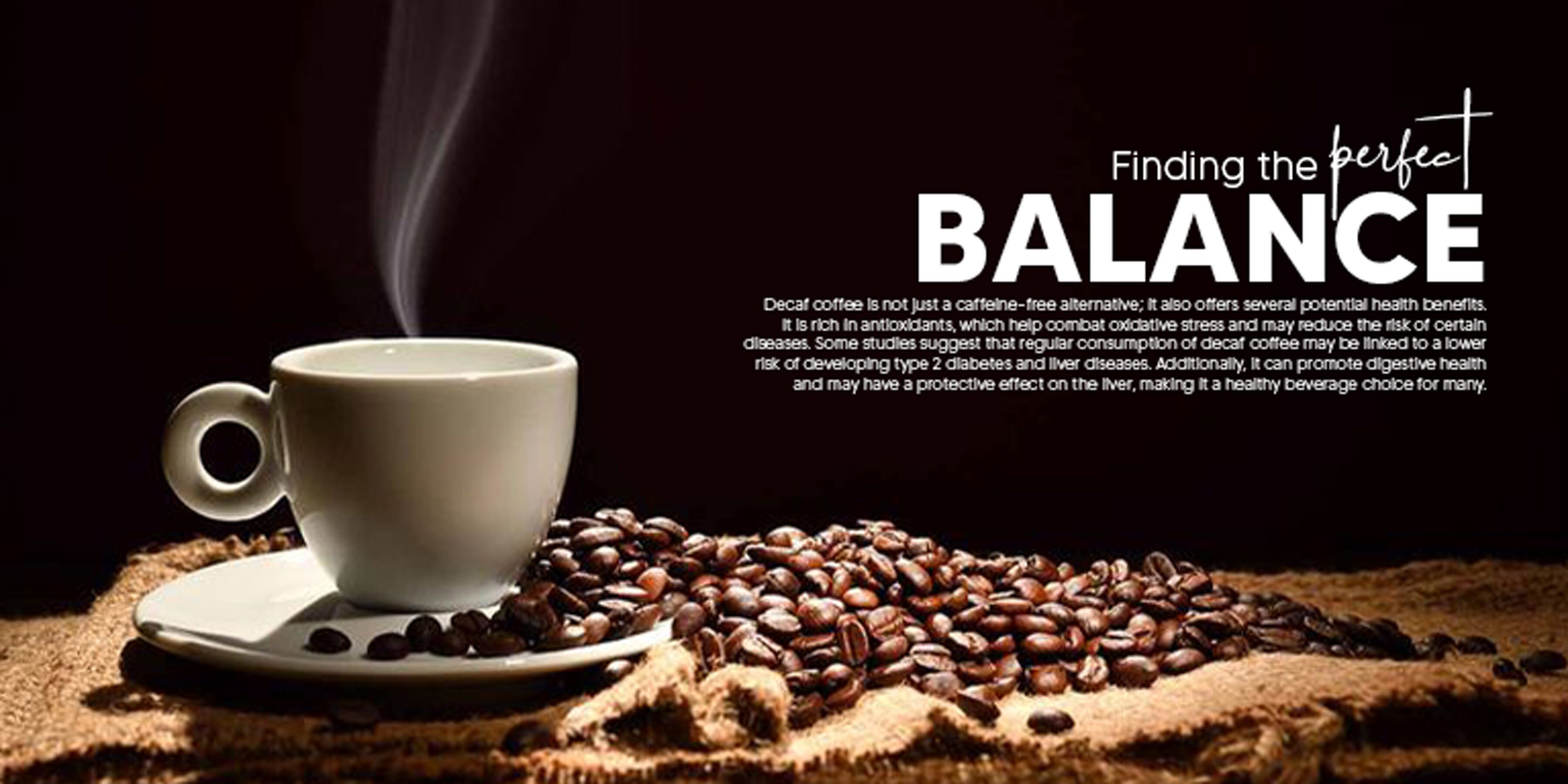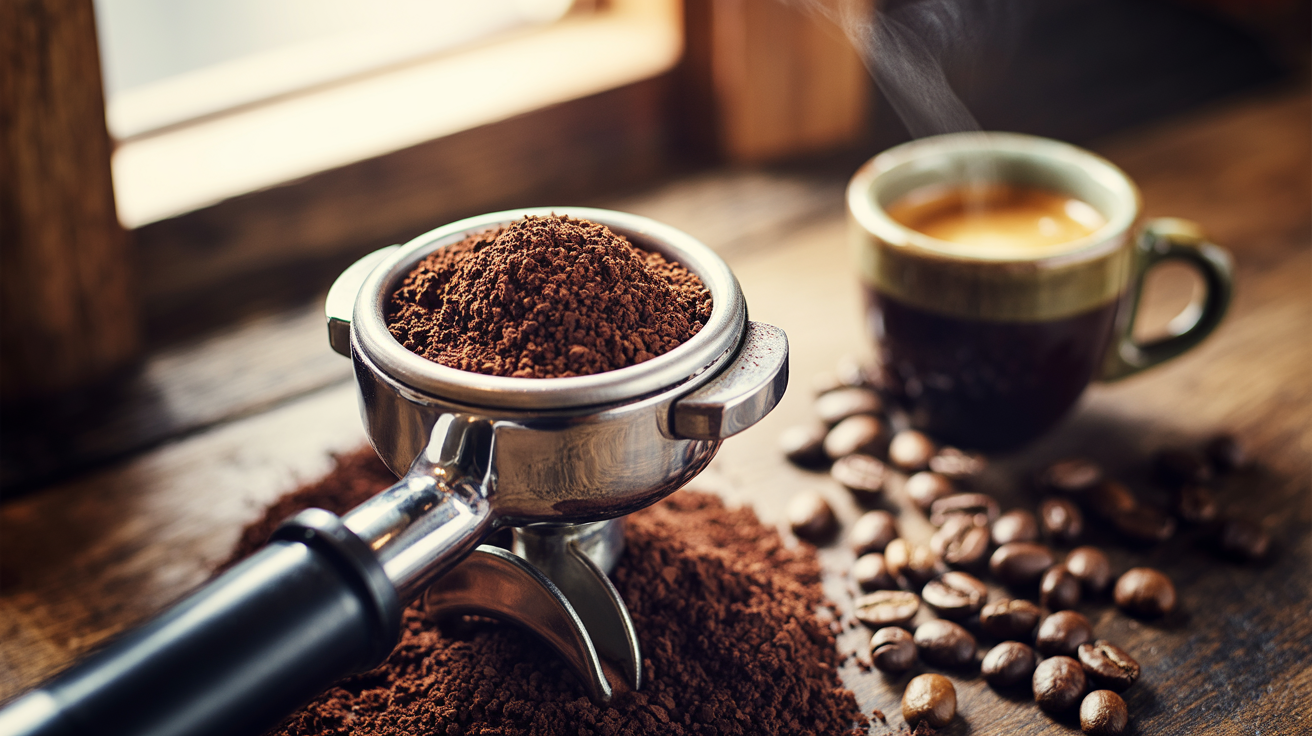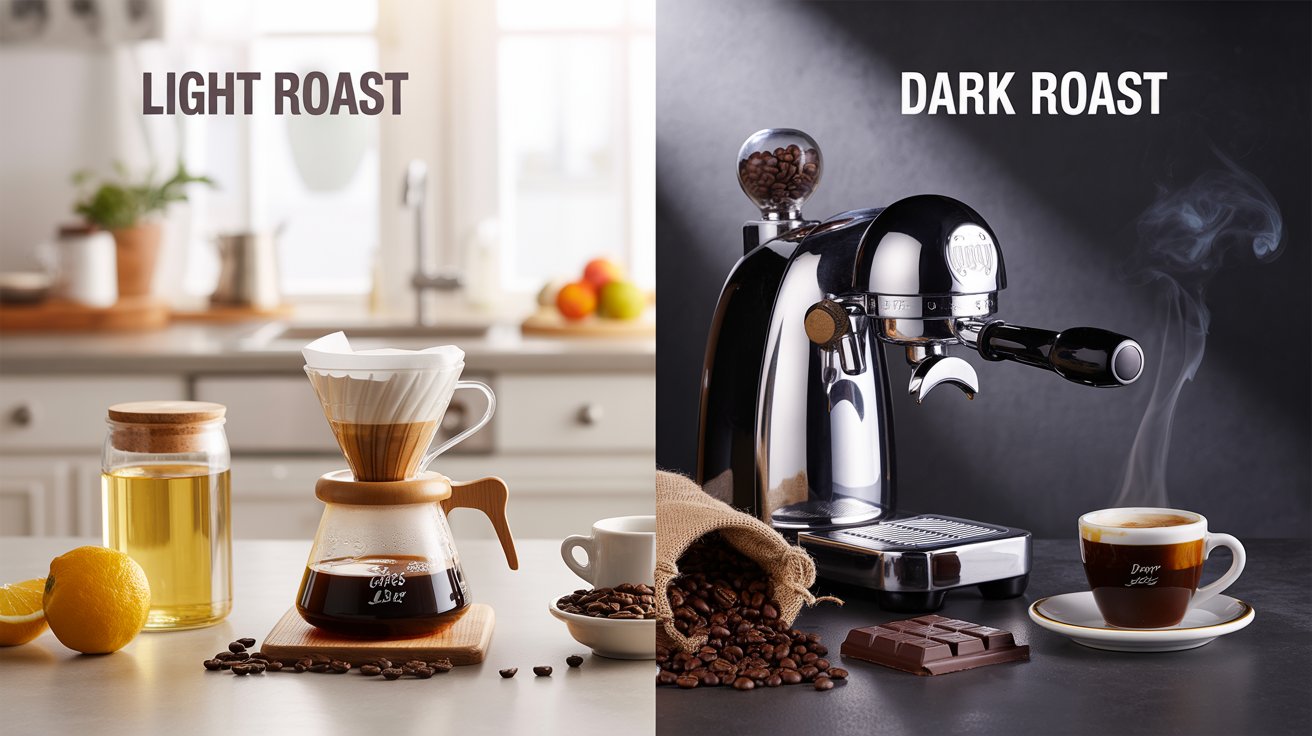The Ultimate Guide to Espresso Beans: What You Need to Know The Ultimate Guide to Espresso Beans: What You Need...
Read More5 Surprising Benefits of Drinking Breve Coffee Daily
5 Surprising Benefits of Drinking Breve Coffee Daily

Introduction
Briefly introduce what breve coffee is and how it is growing in popularity.
Breve coffee is a deliciously rich espresso drink with steamed half-and-half, which gives it a thick creaminess that coffee enthusiasts love. As the world continues to seek unique and flavorful caffeine experiences, breve caffeine has become a favorite for café goers, coffee connoisseurs, and home brewers alike. Its smooth, velvety flavor and the ideal combination of coffee and cream render it an enticing alternative to a standard latte or cappuccino. More people discover the great flavor and versatility of breve coffee, quickly making it a must-have in the world of caffeine and appealing to those in search of everyday luxury.
What is Breve Coffee?
Define breve coffee’s meaning.
It uses steamed half-and-half to yield a creamy-rich coffee that makes the breve coffee stand out from other espresso-based drinks. Breve comes from the Italian word for “short” and is used to describe the shorter brewing time it takes to brew espresso with a milk alternative. What does breve coffee mean? If you are looking for what breve coffee means, this is more than a drink; it is an indulgent experience. Breve coffee differs from regular caffeine drinks that use milk or cream. It uses half and half, so it offers an extra dose of creaminess and flavor, which many people love and restaurant patrons often choose.
Explain the ingredients and how they differ from regular coffee.
Breve coffee is made with a few simple touchpoints that make it quite different from regular coffee. The two main ingredients are espresso and steamed half-and-half, a mixture of equal parts milk and cream. The Milk Stout you use adds that creamy mouthfeel to the drink. Unlike regular caffeine, breve coffee uses half-and-half for a silkier texture and richer flavor. This unique ingredient selection sets breve coffee apart, providing a decadent alternative for those looking to indulge in a richer caffeine experience.
Include a visual or infographic to illustrate the components.
A bit of a visual can go a long way to understanding breve coffee better. An interactive infographic with basic components such as espresso, steamed half-and-half, and any toppings (if whipped cream or flavored syrups) helps with asset identification. This graphic can help strip the brewing process down to its roots, showing how each ingredient lends a hand to the drink’s mouthfeel and taste. Seeing a breve coffee next to a regular cup helps illustrate the differences in ingredients and preparation. Such an infographic is not just attention-grabbing but is also a pocket reference for those interested in recreating this decadent drink at home and, therefore, makes its way into the indispensable category.
Benefit #1: Enhanced Flavor Profile
Discuss the rich and creamy taste of breve coffee.
Breve coffee is known for its rich and creamy flavor, and one of its best parts is its flavor profile. Suitably velvety with the merger of espresso and steamed half-and-half, it should not be confused with other kinds of coffee. Coffee lovers will appreciate this decadent infusion that marries the richness of espresso with the sweetness and creaminess of half-and-half, creating a balanced, heavenly drink. Breve coffee can also be different from regular caffeine. Regular coffee can be bitter, but breve coffee has a rich and luxurious mouthfeel that imparts warmth and comfort, making it a desirable alternative for people looking for a daily spring in their step.
Compare it to other types of coffee.
We will now compare breve with other forms of coffee to see what is so unique about it. Breve coffee differs from traditional black coffee, which possesses a more bitter taste; thanks to the espresso mixed with steamed half-and-half, it provides a rich, creamy flavor. Breve coffee has a creamier mouthfeel and taste than lattes, which are made with milk, simply because of its higher fat content. Where cappuccinos offer frothy milk foam, creamy espresso provides the drinker with a smooth, velvety experience. This unique profile makes creamy espresso particularly appealing to those seeking to enhance their caffeine journey with a rich and indulgent touch.
Incorporate user testimonials or quotes about the flavor experience.
Breve coffee tastes amazing; if you don’t believe me, check out some user testimonials here. A happy drinker enthuses, “Breve coffee is a game changer! And the creamy texture makes every sip feel like a pampering treat.” “I had no idea coffee could taste this good, it just really strong and smooth,” a fellow coffee lover comments. Creamy espresso is known among enthusiasts for its balance of espresso’s boldness and half-and-half its indulgence, and this balance is finally presenting itself to the senses in a way that captivates the tongue. Aside from the sensational taste that these reviews highlight, it is evident that Creamy Espresso has become an alternative staple drink for caffeine lovers.

Benefit #2: Nutritional Boost
Detail the nutritional advantages of breve coffee (e.g., calcium, vitamins).
Breve coffee provides a few extra nutritional benefits, making it an appealing option for health-conscious coffee enthusiasts. One of its big advantages is that it has high calcium, due to half-and-half, which is important for our bones. Creamy espresso also includes vitamins A and D, which promote immune function and overall well-being. Together, the espresso and half-and-half provide a tiny bit of protein, which can help make you feel full. Though creamy espresso is best enjoyed in moderation, its nutritional benefits make it a tasty and sustainable addition to your regular coffee ritual.
Highlight how it can contribute to daily nutrient intake.
Breve coffee can be an excellent addition to your everyday diet, and it is great for reaching recommended nutrient amounts. This drink also contains a creamy half-and-half, which is a great source of important vitamins A and D, which are essential to sustaining a healthy immune and strong bone system. The calcium found in half-and-half also promotes bone density, while the protein in the espresso aids in muscle repair and satiety. A cup of creamy espresso, oh-so-delicious, creamy, and tasty, not only yields healthy nutrients but also helps you build up more nutrients throughout the day.
Mention the importance of moderation.
Breve coffee, with its rich flavor and potential dietary perks, can still be enjoyed, but moderation is key to a healthy balance. Breve coffee contains more fat compared to regular coffee due to the added half-and-half, which means that you will be consuming additional calories that might make you gain weight if you consume it in excess. Moreover, the caffeine in espresso can lead to jitters or affect your sleep if you drink too much. In order to enjoy the indulgence and advantages of creamy espresso completely, remember it can be an occasional treat and not a daily habit. Moderation makes you realize how rich life is while you can still stay healthy and well.
Benefit #3: Increased Energy Levels
Explain how breve coffee provides a sustained energy boost.
Breve coffee is great for those who want a little more energy in their day. It packs a concentrated hit of caffeine, courtesy of the rich espresso base, which is a natural stimulant that enhances alertness and focus. When you combine creamy espresso with rich, creamy half-and-half, it creates a slightly different matrix of carbohydrates and fats that sustains and slowly releases our energy levels over a much greater time frame. While coffee can give you a quick jolt of energy followed by a downslide, the combination of caffeine, along with the oatmeal-like slow-burning fats in the half-and-half, gives a slower release of energy, keeping you fired up and productive without the inevitable slump.
Caffeine Content: Breve Coffee vs. Regular Coffee
Breve coffee usually has a caffeine content similar to that of regular coffee, but this depends mostly on the type of espresso used. A typical shot of espresso, the base of breve coffee, contains about 63 mg of caffeine, whereas an 8-ounce cup of regular brewed coffee averages around 95 mg. Nonetheless, because creamy espresso typically comes in smaller servings, the actual caffeine consumption may vary. The brevity of the coffee offers a rich flavor experience for those who are sensitive to caffeine while not increasing caffeine consumption as much as larger servings of regular coffee.
Share scientific studies or statistics on caffeine benefits.
Many scientific studies emphasize the beneficial properties of caffeine, particularly its role in enhancing our mental alertness and cognitive processing. A new study published in the journal Psychopharmacology has found caffeine to enhance attention, reaction time, and overall cognitive performance. Also, another study from the American Journal of Clinical Nutrition found that moderate caffeine intake, at around 200–400 mg/day, is associated with a decreased risk of some diseases, such as Parkinson’s and even Alzheimer’s. Research proves that caffeine increases metabolism and improves athletic performance, so drinks like breve coffee, made from espresso, offer a tasty way to enjoy these health benefits in moderation.
Benefit #4: Supports Digestive Health
Explore how ingredients in breve coffee can aid digestion.
Breve coffee can be a delicious friend that helps digestive health. The feeling of satiety that comes from the combination of rich espresso and creamy half-and-half is not just delicious but also helps prevent digestive issues. The fats in half-and-half can encourage bile production, aiding in more efficient processing of fats and nutrient absorption. The caffeine contained in espresso, moreover, may stimulate gastric motility, facilitating the more efficient passage of food through the digestive tract. Moderation is key with any new beverage, but if you enjoy your creamy espresso in moderation, it can have a place in your digestive regimen as a guilty pleasure.
Include insights from nutritionists or health experts.
Breve coffee is one of the most discussed types of coffee. Registered dietitian Sarah Johnson points out that the half-and-half in creamy espresso contains essential vitamins A and D, which support bone health and immune function. Caffeine can also boost focus and energy levels, making it a good choice for busy people. Nonetheless, experts do recommend consuming creamy espresso in moderation in order to avoid too many calories and caffeine dependencies. Breve coffee can be a delightful addition to a healthy diet, striking a balance between indulgence and nutrition.
Mention any personal anecdotes or case studies.
Breve coffee makes it to their personal mugs and routines, and they all enjoy a good cup of coffee, espresso shots. The Browns and Merry Delights. One busy professional said switching to creamy espresso helped her stay alert and focused, even during long workdays. Studies on a small group of athletes showed that drinking creamy espresso before a workout gave them enough energy for several hours, without the nerves that come with many caffeinated beverages. Personal stories like these really go to show how creamy espresso suits taste preferences and lifestyles, as evidenced by its popularity.

Discuss how breve coffee can be tweaked with various recipes.
Breve coffee is highly versatile and customizable, making it ideal for coffee lovers who want to tailor the drink to their preferences. A common twist is to add flavored syrups, like vanilla or caramel, which enhance the sweetness and the aroma of a beverage. If you’re in the mood for something richer, try adding whipped cream or a touch of cocoa powder on top. You can also play around with the type of milk; using something like almond or oat milk would give you a unique flavor, too. From a spiced pumpkin breve in the fall to a fresh iced take on the summer, the options are endless and give breve coffee a perfect blank canvas for content creation.
Introducing a simple breve coffee recipe for readers to try at home.
Breve Coffee Recipe at Home Breve coffee is easy to make at home and very rewarding! To prepare this creamy treat, begin by brewing a shot of espresso with your preferred coffee beans. At the same time, the espresso is brewing, steaming 2 ounces of half-and-half to a velvety texture. I pour the espresso and steamed half-and-half into a cup, stirring lightly to meld the flavors. For something fancier, throw in a splash of vanilla extract or a pinch of cinnamon. Sit back and relax, and savor your homemade Creamy Espresso, a rich and indulgent treat that packs a satisfying punch into your day from one coffee lover to the next!
Encourage creativity in brewing and flavoring.
Breve coffee is an interesting coffee that creates a new flavoring experience. Feel free to be creative here! You can also try flavoring your half-and-half, maybe by adding hazelnut or lavender. You can also experiment with spices to elevate your drink, like nutmeg or cardamom. For a cooler summer variation, add cold brew espresso and ice, then top with cold whipped cream. A splash of your favorite liqueur can change it into a delightful dessert drink. The options are unlimited, so use your imagination and create a cute little Creamy Espresso just for your taste!
Recap the surprising benefits of incorporating breve coffee into a daily routine.
The inclusion of breve coffee in your daily routine can bring devastating benefits that improve your enjoyment and health. This creamy drink provides a rich, decadent taste and also serves as a source of nutrients such as half-and-half-derived vitamins A and D. Creamy Espresso contains a moderately high amount of caffeine, which increases energy and mental clarity without the jitters as seen with some caffeinated drinks. Its versatility allows for a million different preparations, making it enjoyable for everyone. With all the benefits of these vitamin-rich beans, you can enjoy a tasty daily habit that’s good for you, shot by shot, cup by cup!
Popular Posts
Amaretto Coffee: A Sweet, Nutty Twist on Your Favorite Brew
How to Make the Best Amaretto Coffee: Delicious Recipes & Syrup Guide How to Make the Best Amaretto Coffee: Delicious...
Read MoreArabic Coffee: A Traditional Brew with Rich Flavors
Arabic Coffee History That Will Fascinate You Arabic Coffee History That Will Fascinate You What is Arabic coffee? Arabic coffee,...
Read MoreThe Ultimate Guide to Perfect Espresso Grounds
The Ultimate Guide to Perfect Espresso Grounds The Ultimate Guide to Perfect Espresso Grounds Introduction: Mastering Espresso Grounds for Great...
Read MoreMacchiato vs Other Coffees: Barista-Backed Comparisons
Macchiato vs Other Coffees: Barista-Backed Comparisons Macchiato vs Other Coffees: Barista-Backed Comparisons 1. Introduction: Exploring the World of Coffee Drinks...
Read More
Introduction
Briefly introduce what breve coffee is and how it is growing in popularity.
Breve coffee is a deliciously rich espresso drink with steamed half-and-half, which gives it a thick creaminess that coffee enthusiasts love. As the world continues to seek unique and flavorful caffeine experiences, breve caffeine has become a favorite for café goers, coffee connoisseurs, and home brewers alike. Its smooth, velvety flavor and the ideal combination of coffee and cream render it an enticing alternative to a standard latte or cappuccino. More people discover the great flavor and versatility of breve coffee, quickly making it a must-have in the world of caffeine and appealing to those in search of everyday luxury.
What is Breve Coffee?
Define breve coffee’s meaning.
It uses steamed half-and-half to yield a creamy-rich coffee that makes the breve coffee stand out from other espresso-based drinks. Breve comes from the Italian word for “short” and is used to describe the shorter brewing time it takes to brew espresso with a milk alternative. What does breve coffee mean? If you are looking for what breve coffee means, this is more than a drink; it is an indulgent experience. Breve coffee differs from regular caffeine drinks that use milk or cream. It uses half and half, so it offers an extra dose of creaminess and flavor, which many people love and restaurant patrons often choose.
Explain the ingredients and how they differ from regular coffee.
Breve coffee is made with a few simple touchpoints that make it quite different from regular coffee. The two main ingredients are espresso and steamed half-and-half, a mixture of equal parts milk and cream. The Milk Stout you use adds that creamy mouthfeel to the drink. Unlike regular caffeine, breve coffee uses half-and-half for a silkier texture and richer flavor. This unique ingredient selection sets breve coffee apart, providing a decadent alternative for those looking to indulge in a richer caffeine experience.
Include a visual or infographic to illustrate the components.
A bit of a visual can go a long way to understanding breve coffee better. An interactive infographic with basic components such as espresso, steamed half-and-half, and any toppings (if whipped cream or flavored syrups) helps with asset identification. This graphic can help strip the brewing process down to its roots, showing how each ingredient lends a hand to the drink’s mouthfeel and taste. Seeing a breve coffee next to a regular cup helps illustrate the differences in ingredients and preparation. Such an infographic is not just attention-grabbing but is also a pocket reference for those interested in recreating this decadent drink at home and, therefore, makes its way into the indispensable category.
Benefit #1: Enhanced Flavor Profile
Discuss the rich and creamy taste of breve coffee.
Breve coffee is known for its rich and creamy flavor, and one of its best parts is its flavor profile. Suitably velvety with the merger of espresso and steamed half-and-half, it should not be confused with other kinds of coffee. Coffee lovers will appreciate this decadent infusion that marries the richness of espresso with the sweetness and creaminess of half-and-half, creating a balanced, heavenly drink. Breve coffee can also be different from regular caffeine. Regular coffee can be bitter, but breve coffee has a rich and luxurious mouthfeel that imparts warmth and comfort, making it a desirable alternative for people looking for a daily spring in their step.
Compare it to other types of coffee.
We will now compare breve with other forms of coffee to see what is so unique about it. Breve coffee differs from traditional black coffee, which possesses a more bitter taste; thanks to the espresso mixed with steamed half-and-half, it provides a rich, creamy flavor. Breve coffee has a creamier mouthfeel and taste than lattes, which are made with milk, simply because of its higher fat content. Where cappuccinos offer frothy milk foam, creamy espresso provides the drinker with a smooth, velvety experience. This unique profile makes creamy espresso particularly appealing to those seeking to enhance their caffeine journey with a rich and indulgent touch.
Incorporate user testimonials or quotes about the flavor experience.
Breve coffee tastes amazing; if you don’t believe me, check out some user testimonials here. A happy drinker enthuses, “Breve coffee is a game changer! And the creamy texture makes every sip feel like a pampering treat.” “I had no idea coffee could taste this good, it just really strong and smooth,” a fellow coffee lover comments. Creamy espresso is known among enthusiasts for its balance of espresso’s boldness and half-and-half its indulgence, and this balance is finally presenting itself to the senses in a way that captivates the tongue. Aside from the sensational taste that these reviews highlight, it is evident that Creamy Espresso has become an alternative staple drink for caffeine lovers.

Benefit #2: Nutritional Boost
Detail the nutritional advantages of breve coffee (e.g., calcium, vitamins).
Breve coffee provides a few extra nutritional benefits, making it an appealing option for health-conscious coffee enthusiasts. One of its big advantages is that it has high calcium, due to half-and-half, which is important for our bones. Creamy espresso also includes vitamins A and D, which promote immune function and overall well-being. Together, the espresso and half-and-half provide a tiny bit of protein, which can help make you feel full. Though creamy espresso is best enjoyed in moderation, its nutritional benefits make it a tasty and sustainable addition to your regular coffee ritual.
Highlight how it can contribute to daily nutrient intake.
Breve coffee can be an excellent addition to your everyday diet, and it is great for reaching recommended nutrient amounts. This drink also contains a creamy half-and-half, which is a great source of important vitamins A and D, which are essential to sustaining a healthy immune and strong bone system. The calcium found in half-and-half also promotes bone density, while the protein in the espresso aids in muscle repair and satiety. A cup of creamy espresso, oh-so-delicious, creamy, and tasty, not only yields healthy nutrients but also helps you build up more nutrients throughout the day.
Mention the importance of moderation.
Breve coffee, with its rich flavor and potential dietary perks, can still be enjoyed, but moderation is key to a healthy balance. Breve coffee contains more fat compared to regular coffee due to the added half-and-half, which means that you will be consuming additional calories that might make you gain weight if you consume it in excess. Moreover, the caffeine in espresso can lead to jitters or affect your sleep if you drink too much. In order to enjoy the indulgence and advantages of creamy espresso completely, remember it can be an occasional treat and not a daily habit. Moderation makes you realize how rich life is while you can still stay healthy and well.
Benefit #3: Increased Energy Levels
Explain how breve coffee provides a sustained energy boost.
Breve coffee is great for those who want a little more energy in their day. It packs a concentrated hit of caffeine, courtesy of the rich espresso base, which is a natural stimulant that enhances alertness and focus. When you combine creamy espresso with rich, creamy half-and-half, it creates a slightly different matrix of carbohydrates and fats that sustains and slowly releases our energy levels over a much greater time frame. While coffee can give you a quick jolt of energy followed by a downslide, the combination of caffeine, along with the oatmeal-like slow-burning fats in the half-and-half, gives a slower release of energy, keeping you fired up and productive without the inevitable slump.
Caffeine Content: Breve Coffee vs. Regular Coffee
Breve coffee usually has a caffeine content similar to that of regular coffee, but this depends mostly on the type of espresso used. A typical shot of espresso, the base of breve coffee, contains about 63 mg of caffeine, whereas an 8-ounce cup of regular brewed coffee averages around 95 mg. Nonetheless, because creamy espresso typically comes in smaller servings, the actual caffeine consumption may vary. The brevity of the coffee offers a rich flavor experience for those who are sensitive to caffeine while not increasing caffeine consumption as much as larger servings of regular coffee.
Share scientific studies or statistics on caffeine benefits.
Many scientific studies emphasize the beneficial properties of caffeine, particularly its role in enhancing our mental alertness and cognitive processing. A new study published in the journal Psychopharmacology has found caffeine to enhance attention, reaction time, and overall cognitive performance. Also, another study from the American Journal of Clinical Nutrition found that moderate caffeine intake, at around 200–400 mg/day, is associated with a decreased risk of some diseases, such as Parkinson’s and even Alzheimer’s. Research proves that caffeine increases metabolism and improves athletic performance, so drinks like breve coffee, made from espresso, offer a tasty way to enjoy these health benefits in moderation.
Benefit #4: Supports Digestive Health
Explore how ingredients in breve coffee can aid digestion.
Breve coffee can be a delicious friend that helps digestive health. The feeling of satiety that comes from the combination of rich espresso and creamy half-and-half is not just delicious but also helps prevent digestive issues. The fats in half-and-half can encourage bile production, aiding in more efficient processing of fats and nutrient absorption. The caffeine contained in espresso, moreover, may stimulate gastric motility, facilitating the more efficient passage of food through the digestive tract. Moderation is key with any new beverage, but if you enjoy your creamy espresso in moderation, it can have a place in your digestive regimen as a guilty pleasure.
Include insights from nutritionists or health experts.
Breve coffee is one of the most discussed types of coffee. Registered dietitian Sarah Johnson points out that the half-and-half in creamy espresso contains essential vitamins A and D, which support bone health and immune function. Caffeine can also boost focus and energy levels, making it a good choice for busy people. Nonetheless, experts do recommend consuming creamy espresso in moderation in order to avoid too many calories and caffeine dependencies. Breve coffee can be a delightful addition to a healthy diet, striking a balance between indulgence and nutrition.
Mention any personal anecdotes or case studies.
Breve coffee makes it to their personal mugs and routines, and they all enjoy a good cup of coffee, espresso shots. The Browns and Merry Delights. One busy professional said switching to creamy espresso helped her stay alert and focused, even during long workdays. Studies on a small group of athletes showed that drinking creamy espresso before a workout gave them enough energy for several hours, without the nerves that come with many caffeinated beverages. Personal stories like these really go to show how creamy espresso suits taste preferences and lifestyles, as evidenced by its popularity.

Discuss how breve coffee can be tweaked with various recipes.
Breve coffee is highly versatile and customizable, making it ideal for coffee lovers who want to tailor the drink to their preferences. A common twist is to add flavored syrups, like vanilla or caramel, which enhance the sweetness and the aroma of a beverage. If you’re in the mood for something richer, try adding whipped cream or a touch of cocoa powder on top. You can also play around with the type of milk; using something like almond or oat milk would give you a unique flavor, too. From a spiced pumpkin breve in the fall to a fresh iced take on the summer, the options are endless and give breve coffee a perfect blank canvas for content creation.
Introducing a simple breve coffee recipe for readers to try at home.
Breve Coffee Recipe at Home Breve coffee is easy to make at home and very rewarding! To prepare this creamy treat, begin by brewing a shot of espresso with your preferred coffee beans. At the same time, the espresso is brewing, steaming 2 ounces of half-and-half to a velvety texture. I pour the espresso and steamed half-and-half into a cup, stirring lightly to meld the flavors. For something fancier, throw in a splash of vanilla extract or a pinch of cinnamon. Sit back and relax, and savor your homemade Creamy Espresso, a rich and indulgent treat that packs a satisfying punch into your day from one coffee lover to the next!
Encourage creativity in brewing and flavoring.
Breve coffee is an interesting coffee that creates a new flavoring experience. Feel free to be creative here! You can also try flavoring your half-and-half, maybe by adding hazelnut or lavender. You can also experiment with spices to elevate your drink, like nutmeg or cardamom. For a cooler summer variation, add cold brew espresso and ice, then top with cold whipped cream. A splash of your favorite liqueur can change it into a delightful dessert drink. The options are unlimited, so use your imagination and create a cute little Creamy Espresso just for your taste!
Recap the surprising benefits of incorporating breve coffee into a daily routine.
The inclusion of breve coffee in your daily routine can bring devastating benefits that improve your enjoyment and health. This creamy drink provides a rich, decadent taste and also serves as a source of nutrients such as half-and-half-derived vitamins A and D. Creamy Espresso contains a moderately high amount of caffeine, which increases energy and mental clarity without the jitters as seen with some caffeinated drinks. Its versatility allows for a million different preparations, making it enjoyable for everyone. With all the benefits of these vitamin-rich beans, you can enjoy a tasty daily habit that’s good for you, shot by shot, cup by cup!
Popular Posts
Arabic Coffee: A Traditional Brew with Rich Flavors
Arabic Coffee History That Will Fascinate You Arabic Coffee History That Will Fascinate You What is Arabic coffee? Arabic coffee,...
Read MoreHow to Make Almond Syrup at Home (Better Than Store-Bought!)
Crafting Homemade Almond Syrup – A Step-by-Step Guide with Pro Tips Crafting Homemade Almond Syrup – A Step-by-Step Guide with...
Read MoreInstant Espresso: Enjoy Rich Espresso Anytime, Anywhere
The Ultimate Guide to Espresso Beans: What You Need to Know The Ultimate Guide to Espresso Beans: What You Need...
Read MoreColombian Coffee: Discover the Rich Flavors of Colombia’s Best
Discover the Richness of Colombia Coffee: A Complete Guide Discover the Richness of Colombia Coffee: A Complete Guide Introduction to...
Read MoreAmaretto Coffee: A Sweet, Nutty Twist on Your Favorite Brew
How to Make the Best Amaretto Coffee: Delicious Recipes & Syrup Guide How to Make the Best Amaretto Coffee: Delicious...
Read MoreLight vs Dark Roast Coffee: Which One Is Right for You?
Light vs Dark Roast Coffee: What Every Coffee Lover Should Know Light vs Dark Roast Coffee: What Every Coffee Lover...
Read More








